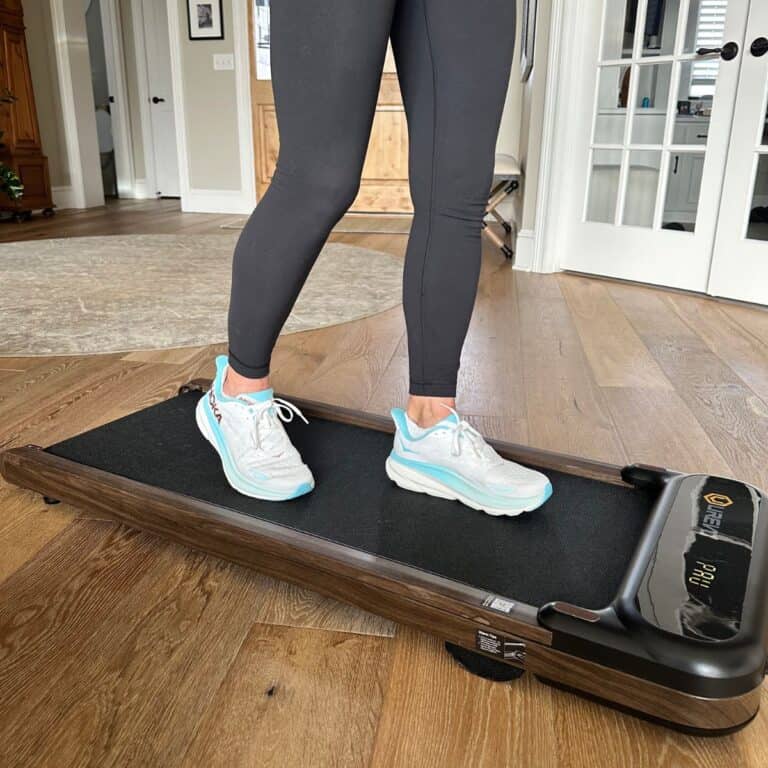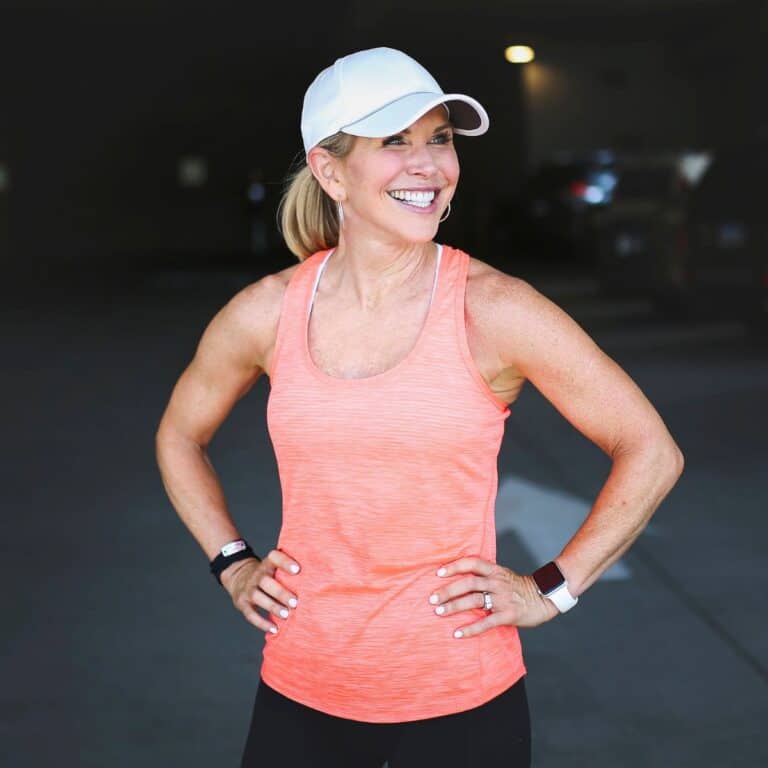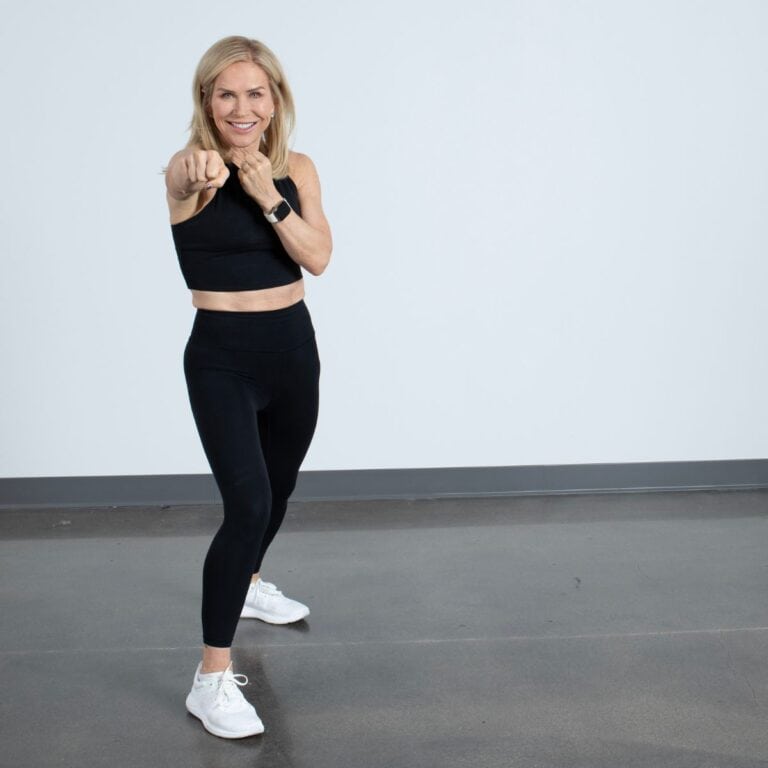Women complain to me all the time that it is so hard to get enough protein. I always reply, “it’s actually easy” but you DO have to eat real food, a good variety, and make good choices. Protein is more than just a muscle-building macronutrient—it plays a critical role in keeping your metabolism revved up.
As we age, we naturally lose muscle mass (a process called sarcopenia), which slows down metabolism. That’s just one of the reasons there’s a lot I do differently at 59 vs. 39.
Strength training helps combat this, but without enough protein, your body won’t have the building blocks it needs to repair and grow muscle.
More muscle = higher resting metabolic rate, which means you burn more calories even at rest.
Get the Latests Posts to Your Inbox
Join over 100,000 followers who are inspired to make healthier lifestyle choices as they age!
Plus, protein is essential for hormone regulation, recovery, and satiety. If you’re in midlife, keeping muscle mass intact also helps with bone density, joint health, and overall strength—so you can keep doing the activities you love without injury or fatigue.
It’s also an important part of preventing menopause weight gain.
Read below to see how I meet the goal of at least 30 grams of protein per meal, 100+ grams of protein a day.
What is Protein?
Protein is made up of amino acids, which are the building blocks of muscle, tissue repair, and enzymes that regulate bodily functions.
There are complete proteins (which contain all nine essential amino acids, like those from animal sources) and incomplete proteins (plant-based sources that may lack one or more essential amino acids).
Whether you eat animal products or prefer to stay plant based, it’s easy to get the mix of amino acids you need. To maximize benefits, aim for a variety of high-quality proteins throughout your day.
How I Get 30 Grams of Protein in Every Meal
Here’s a brief outline of the protein sources I add to my meals on a daily basis. I do change it up but for ease of explanation, here is a typical day:
Wake Up
- Collagen in AG1 – 20g
Note: Collagen isn’t a complete protein, so pairing it with another protein source in the morning can help round out your amino acid profile. After my workout, I have my breakfast that contains more protein.
Breakfast –protein sources I add to my morning breakfast smoothie.
- 1 scoop protein powder – 20g
- 1 tsp nut butter – ~2g
- 1 tbsp chia seeds – ~2g
- ¼ cup pumpkin seeds – ~7g
Total: ~31g protein
(Great balance of complete protein, fiber, and healthy fats!)
Lunch protein sources
- 4 oz chicken breast – 30g
- Hummus (2 tbsp) with veggies – ~2g
Total: ~32g protein
(Chicken is a powerhouse! The hummus adds a little extra but mostly provides healthy fats and fiber.)
Snack
- 1 cup Greek yogurt – ~20g
Total: ~20g protein
(Greek yogurt is a great mid-day protein boost—plus, it’s rich in probiotics for gut health!)
Dinner protein sources
- 4 oz fish, chicken, or beef – ~30g
- Veggies – ~2g
- ½ cup cooked quinoa – ~4g
Total: ~36g protein
(Quinoa is a complete plant-based protein and pairing it with a protein-rich main makes this meal well-rounded!)
Daily Total: ~139g Protein
More Protein Ideas
So this is just a snap shot of the different protein sources I might add to my day. This plan is not only high in protein but also well-balanced with fiber, healthy fats, and nutrients. But this is like I said, just one day. I often change it up. Here are some other ideas for adding protein to your day.
With these swaps and snack options below, you can mix things up every day so you’re not eating the same thing over and over. If you need an extra protein boost, just add a high-protein snack or swap in one of the plant-based options for variety.
Plant-Based Protein Swaps
If you want to change things up or go more plant-based for some meals, here are some easy swaps:
Breakfast Swaps
Instead of protein powder, try:
- ½ cup tofu blended into a smoothie (10g)
- ½ cup cottage cheese mixed in (14g)
Instead of nut butter + seeds, try:
- 2 tbsp hemp seeds (6g)
- 2 tbsp peanut butter powder (8g)
- 1 tbsp flaxseeds (2g)
Lunch & Dinner Swaps
Instead of chicken, fish, or beef, try:
- 6 oz tempeh (36g)
- 1 cup cooked lentils (18g)
- 1 cup black beans + ¼ cup quinoa (20g total)
Instead of hummus, try:
- ¼ cup edamame (9g)
- 3 oz seitan (21g)
Instead of quinoa, try:
- ½ cup cooked farro (6g)
- 1 whole grain pita (6g)
High-Protein Snacks (Because I Love to Munch!)
These are easy, grab-and-go options that will keep you full and energized.
- Hard-Boiled Egg (6g)
- 1 oz cheese (cheddar, feta, or mozzarella) (6-7g)
- 2 tbsp peanut butter with apple or celery (8g)
- Handful of almonds (¼ cup) (7g)
- Roasted chickpeas (½ cup) (10g)
- Cottage cheese with berries (½ cup) (14g)
- Pumpkin seeds (¼ cup) (7g)
- Protein bar (look for ones with 15-20g protein)
- Beef or turkey jerky (1 oz) (10g)
- Edamame (½ cup) (9g)
Hopefully this helps you figure out how to hit 100+ grams of protein a day without feeling bored or stuck.
These are just ideas, but I wanted to share with you how I get at least 30 grams of protein each meal. It isn’t hard, it just takes preparation and some commitment to grocery shopping!


